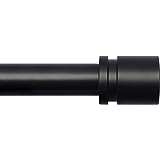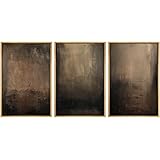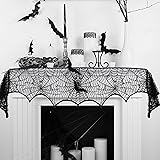How to Make High-Quality Neon Signs at Home: Your Ultimate DIY Guide
The allure of neon signs has captivated us for decades, transforming spaces with their vibrant glow and unique artistry. Once exclusive to commercial establishments or professional artisans, creating these captivating light installations is now within reach for the dedicated DIY enthusiast. If the visual journey in the video above sparked your creative curiosity, this guide will illuminate the path to crafting your very own high-quality neon signs at home.
Diving into DIY neon sign creation opens up a world of personalized decor and artistic expression. It offers a significant cost-effective alternative to custom-ordered pieces, which often carry a premium price tag. Furthermore, the satisfaction of illuminating a design you’ve brought to life with your own hands is truly rewarding.
The Allure of DIY Neon Art
Custom neon signs offer a distinct advantage in personalizing any space, from a cozy living room to a home office or creative studio. They inject a burst of personality, reflecting individual tastes and passions. This bespoke approach allows for unique declarations or artistic statements that mass-produced items simply cannot replicate.
Beyond personalization, the opportunity for creative expression is boundless. You can design intricate logos, meaningful quotes, or abstract art, transforming an ordinary wall into a dynamic focal point. The vibrant glow of a well-executed neon sign elevates the aesthetic of any environment, creating an inviting and modern ambiance that stands out.
Essential Materials and Tools for Your Home Neon Project
Embarking on this craft requires a carefully selected array of materials and tools. Understanding each component’s role is crucial for both safety and successful execution. Unlike traditional glass neon, home DIY projects almost exclusively utilize flexible LED neon strips, offering a safer and more manageable option.
Your shopping list should include:
- Flexible LED Neon Strips: These are the core of your sign. Available in various colors, voltages (typically 12V or 24V), and densities, they mimic the appearance of traditional neon without the fragility or high voltage.
- Acrylic Backing Board: Clear or frosted acrylic provides a sturdy, transparent base for your design. Its versatility allows for precise cutting and drilling, essential for mounting the LED strips.
- Power Supply Unit (PSU): An appropriate DC power adapter (e.g., 12V or 24V, matching your LED strips) is necessary to power your sign. Ensure it has sufficient wattage for your total LED strip length, factoring in a small safety margin.
- Wiring: Select appropriate gauge wire (e.g., 18-22 AWG) for connecting your LED strips to the power supply. Consider both positive and negative lines, often distinguished by color.
- Soldering Iron and Solder: For robust and reliable electrical connections, soldering is often preferred. Alternatively, specialized solderless connectors can simplify the process for beginners.
- Wire Strippers and Cutters: Essential for preparing wires and LED strips.
- Drill and Assorted Bits: For creating mounting holes in the acrylic and routing wires discreetly.
- Acrylic Cutter or Router: To precisely shape your backing board according to your design. A laser cutter offers the highest precision if accessible.
- Strong Adhesive: A transparent, flexible adhesive suitable for plastics (like E6000 or specific silicone glues) will secure the LED strips to the acrylic.
- Heat Gun (Optional but Recommended): Useful for slightly bending thicker acrylic or ensuring a snug fit for LED strips around curves.
- Safety Gear: Always include safety glasses and gloves in your toolkit.
Safety First: Critical Precautions for Neon Sign Creation
While flexible LED neon is significantly safer than traditional gas-filled glass tubes, electrical components and sharp tools still demand careful handling. Prioritizing safety throughout the build process is non-negotiable.
Always disconnect power when working with wiring. Ensure your power supply is appropriately rated for your LED strips to prevent overheating or short circuits. Moreover, use safety glasses when cutting or drilling acrylic to protect against flying debris, which can cause significant injury. Proper ventilation is also advised when using adhesives or soldering, to disperse fumes safely from your workspace.
Designing Your Custom Neon Sign
The design phase is where your vision takes shape, transitioning from concept to a tangible blueprint. Thoughtful planning here prevents costly mistakes and ensures a professional finish.
Begin by sketching your design on paper, experimenting with different fonts and layouts. Consider the sign’s final placement and desired dimensions. Many crafters then transfer their finalized design to digital software like Adobe Illustrator or Inkscape. This allows for precise scaling and the creation of templates for cutting your acrylic backing and marking LED strip placement. During this stage, remember to account for areas where the LED strip will need to be cut and reconnected to maintain continuity.
Step-by-Step Guide to Crafting Your Neon Sign
With your design finalized and materials gathered, the construction process can begin. This sequence ensures a logical and efficient build.
First, prepare your design template. Print it to scale and securely attach it to your acrylic sheet using removable tape. Next, carefully cut and shape the acrylic backing board, following the contours of your design. Using an acrylic cutter or router provides clean edges, critical for a polished appearance.
Once the acrylic is shaped, strategically drill small holes for routing wires. These holes allow power lines to pass through the backing board, connecting different segments of your LED strip discreetly. Begin attaching the LED neon strips to the acrylic, carefully following your design. Apply a thin, even layer of adhesive to secure the strips, allowing ample drying time.
The next critical step involves wiring the LED strips. Cut the strips to length, exposing the copper pads, and then solder the necessary wires to these pads. Connect these wires to your power supply, paying close attention to polarity (positive to positive, negative to negative). Once wired, test your sign by plugging in the power supply. Finally, secure any loose wiring on the back of the sign with cable clips or additional adhesive, ensuring a tidy and safe finish.
Advanced Tips for Professional-Looking Results
Achieving a truly professional finish involves attention to detail beyond the basic assembly. Consider strategies to enhance both aesthetics and functionality.
For seamless connections between LED strip segments, especially around tight corners or complex designs, use short lengths of wire to bridge gaps on the back of the acrylic. This ensures a continuous glow without noticeable breaks. To maintain a clean look, try to hide all wiring on the back of the sign, securing it neatly with tape or small clips. Incorporating a dimmer switch or a smart plug allows for adjustable brightness and remote control, adding a layer of sophistication to your custom piece. Furthermore, exploring different acrylic finishes, such as frosted or colored options, can significantly impact the overall visual effect of your illuminated artwork.
Common Challenges and Troubleshooting
Even with careful planning, DIY projects can encounter unexpected hurdles. Knowing how to troubleshoot common issues can save time and frustration.
If your LEDs are not lighting up, first check all power connections and ensure the power supply is functional and correctly plugged in. Verify that all soldered joints are secure and that no wires are short-circuiting. Uneven light distribution often points to inconsistent adhesive application or kinks in the LED strip itself. Carefully re-examine the strip’s path. Power supply issues, such as flickering or complete failure, might require replacing the unit with one of appropriate wattage. Lastly, acrylic cracking during cutting or drilling typically occurs from excessive pressure or using the wrong tool; always use sharp blades and apply steady, controlled force.
Creating your own how to make neon signs at home is a fulfilling project, blending technical skill with artistic flair. With the right materials, safety precautions, and a methodical approach, you can illuminate your space with a custom, high-quality neon art craft that truly reflects your unique style.











